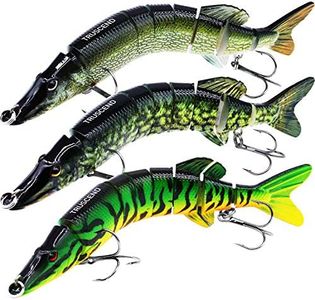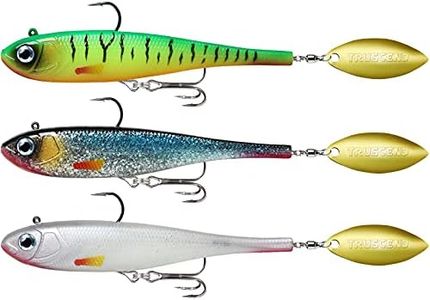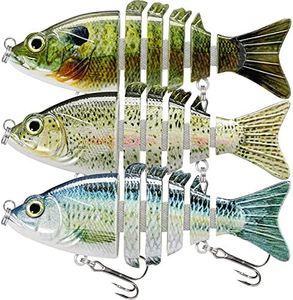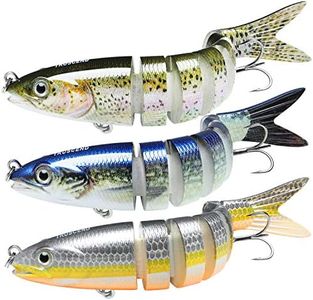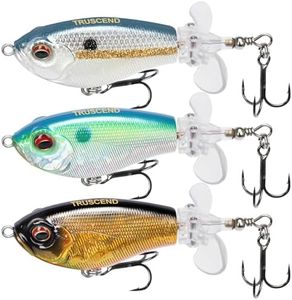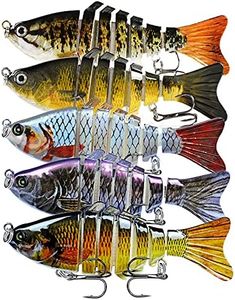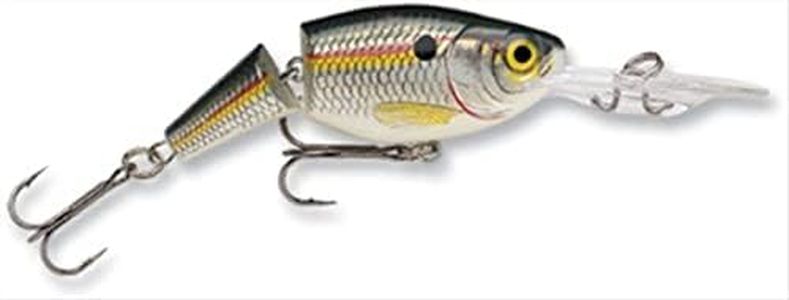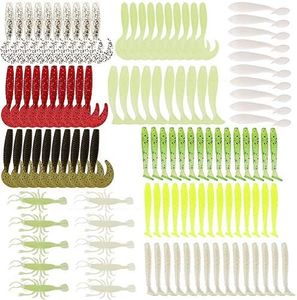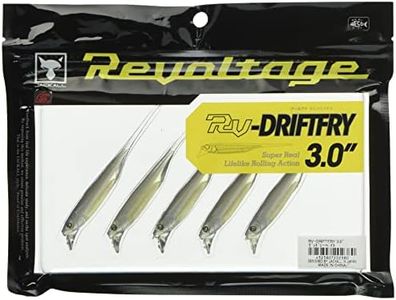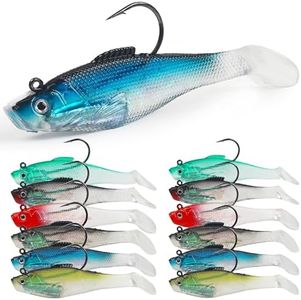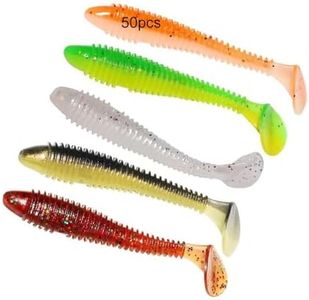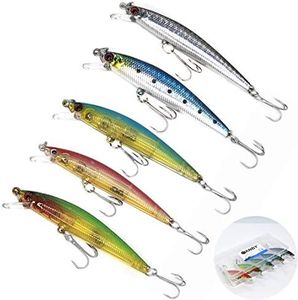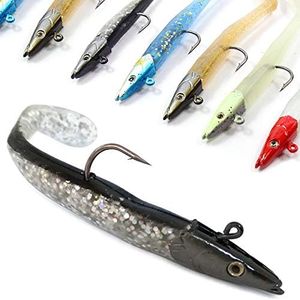We Use CookiesWe use cookies to enhance the security, performance,
functionality and for analytical and promotional activities. By continuing to browse this site you
are agreeing to our privacy policy
10 Best swimbaits
From leading brands and best sellers available on the web.Buying Guide for the Best swimbaits
Choosing the right swimbait can make a big difference in your fishing experience and success. Swimbaits are a type of fishing lure designed to imitate the natural movement of baitfish, and they're especially popular for targeting larger predatory fish. Finding the best swimbait for you depends on where and how you fish, as well as the species you're after. By understanding the essential features and specifications of swimbaits, you can select a lure that matches your needs and increases your chances of a great catch.SizeThe size of a swimbait is a critical factor because it affects which fish you're likely to attract and how the lure behaves in the water. Swimbaits typically range from just a couple of inches to over a foot long. Smaller swimbaits (2–4 inches) are better for lighter gear and smaller fish, making them ideal for ponds or lakes with shyer predators. Medium sizes (4–7 inches) are versatile and can attract both medium and large fish, which is useful if you're fishing in a place with a variety of species. Larger swimbaits (7 inches and up) target big, trophy fish and are best in waters where large predators are present. To pick the right size, think about the typical size of prey in your fishing spot and what size fish you're aiming to catch.
MaterialSwimbaits are usually made from hard plastic or soft plastic, and the material determines how the bait moves and how durable it is. Hard swimbaits often have articulated joints for lifelike swimming action, and they last longer but might be less flexible in the water. Soft swimbaits mimic the feel and movement of real baitfish, making them appealing to wary fish, but they can get torn by sharp teeth. If you value lifelike movement and don't mind replacing the bait more often, soft plastics might suit you. If you want a longer-lasting bait for aggressive fish, hard swimbaits are a solid choice.
BuoyancyBuoyancy refers to whether a swimbait floats, sinks, or is suspended in the water. Floating swimbaits work best for fishing at or near the surface and can trigger bites from fish feeding up top. Sinking swimbaits allow you to reach deeper fish and are good for bottom-dwelling species. Suspended swimbaits maintain their depth, making them handy for keeping a lure in the strike zone longer. Your choice should be guided by where fish are holding in the water column—floating for shallow or surface action, sinking for depth, and suspending for mid-water conditions.
ActionAction describes how a swimbait moves when retrieved. Some swimbaits wiggle, wobble, or glide through the water, while others swim in a wide S-pattern. Fast, aggressive actions are best for active fish or when you want to provoke reaction strikes, while slow, subtle actions are good for calm days or when fish are less aggressive. Consider how fish in your area typically respond—if they prefer fast-chasing, go for a lively action; if they're cautious, a more natural, slower action could be more successful.
Hook SetupThe way a swimbait's hooks are arranged affects your hookup rate and how easily the lure snags on underwater obstacles. Some swimbaits have exposed treble hooks for maximum hooking power, while others have weedless designs with hidden or single hooks to avoid snagging. If you're fishing in areas with a lot of vegetation or cover, a weedless setup is essential. For open water, exposed hooks usually land more fish. Choose according to the typical water environment you'll be targeting.
Color and PatternSwimbaits come in a variety of colors and patterns to imitate local prey or trigger curiosity in fish. Natural colors like silver, gray, and brown work well in clear water when you want to match the hatch, while brighter or unusual colors can be useful in murky water or on cloudy days to increase visibility. Select colors that resemble the local baitfish or fit the water conditions for the day—natural for clear, realistic environments, and bold for dark, stained, or low-light conditions.
